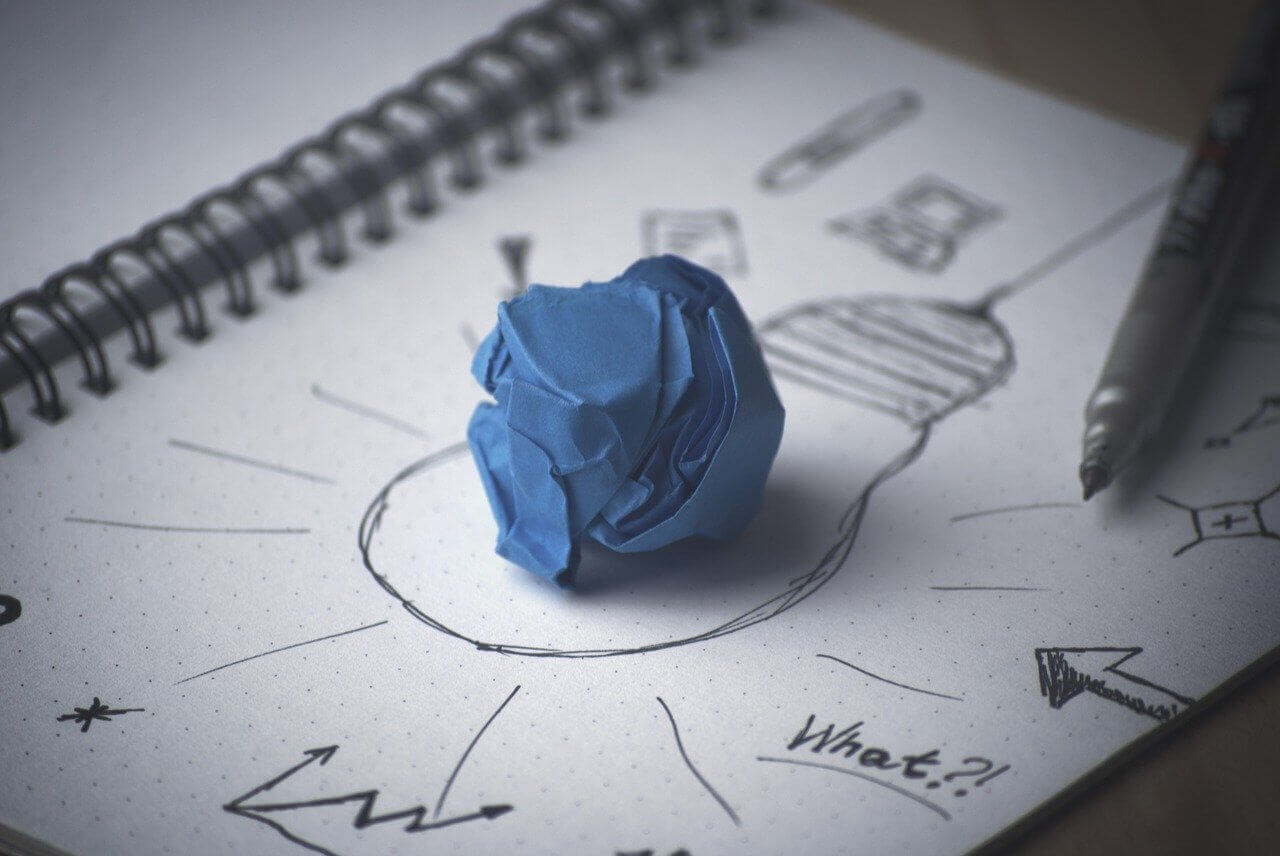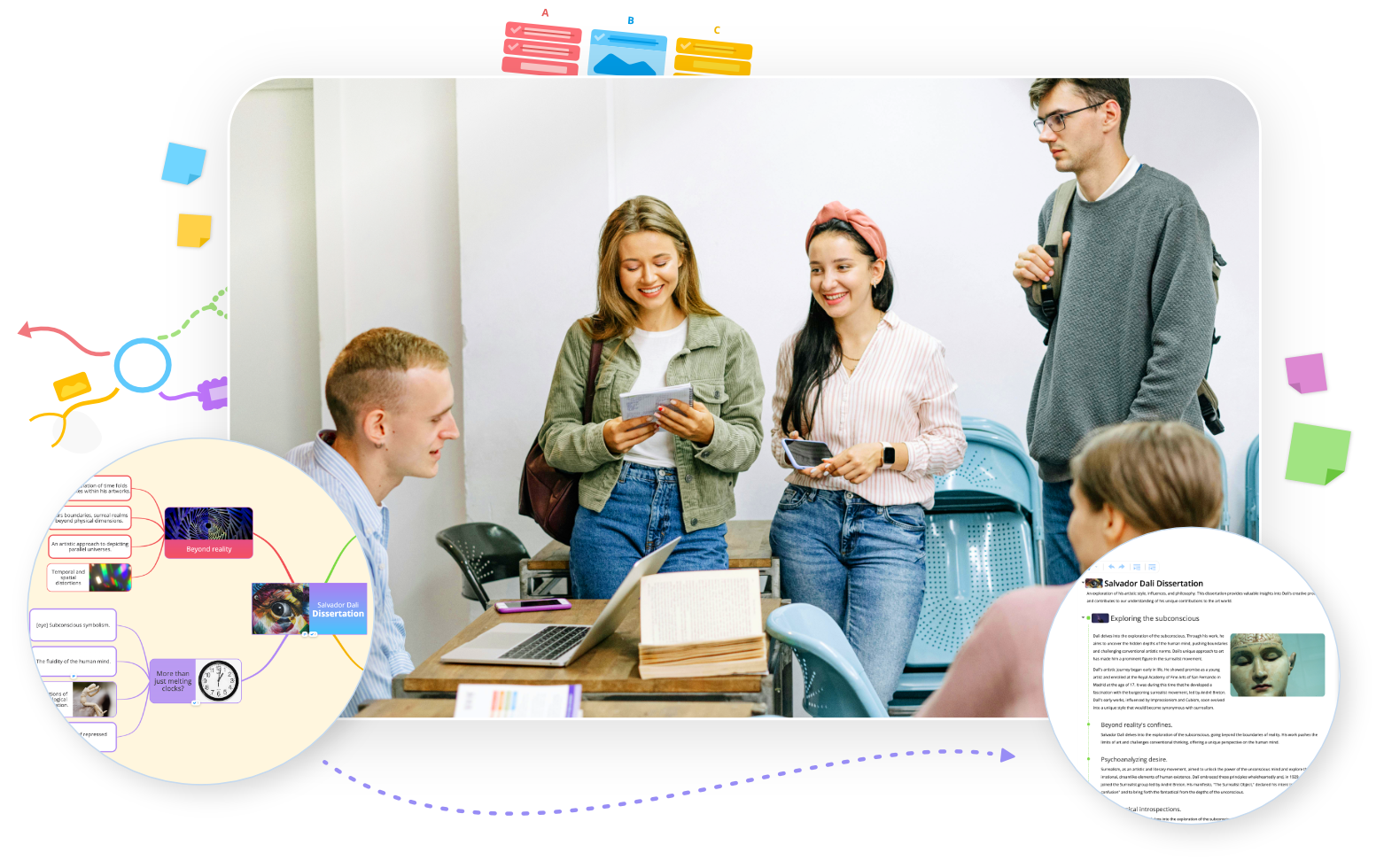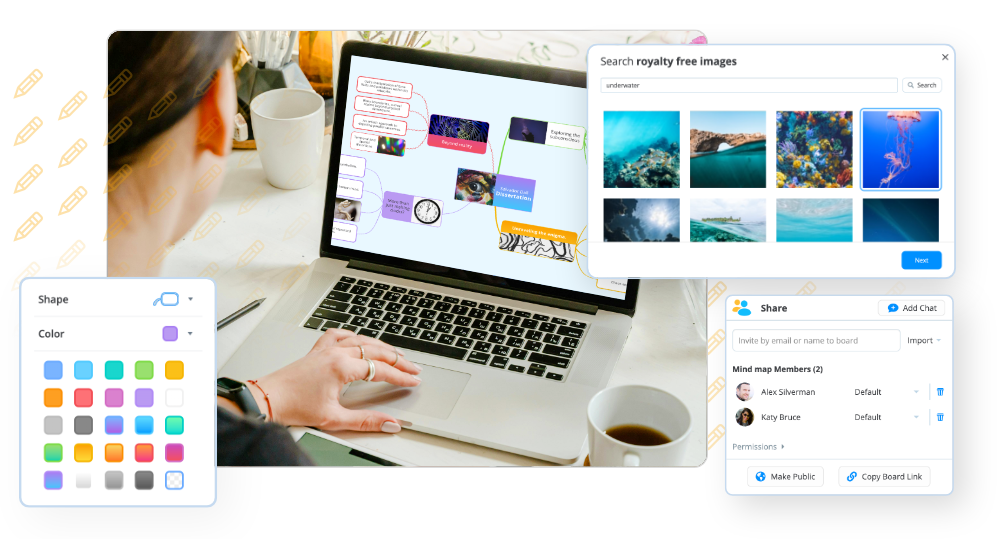Memory has led to some pretty amazing feats throughout history. When Mozart was merely 14 years old (back in the 1700s), he could write down an entire half-hour-long piece of music from memory. In more recent years, memory champions have been setting astonishing records, such as Ben Pridmore who can memorize and recall 364 playing cards in just 10 minutes!
While we might assume that the brains of these memory champions must be extraordinary, it was proven in 2002 that, in fact, their brains are no different than anyone else’s. So, how do they remember so much?
Memory is not an innate human capability; instead, it is a skill that can be improved, and thus, must be practiced – just like any other mental skill. There are a number of things that have been claimed to boost memory, from eating the right foods to doing regular exercise. However, better memorization can also be learned through a method based on association and imagination – and Mind Mapping is the perfect tool to help you achieve this. So, how can you improve memory with Mind Maps, and why exactly does it work?
How to improve memory with association
An important skill to learn that can improve memory is association. This means linking what you want to remember with something else – often something visual.
This is why Mind Mapping is such an effective memory-boosting tool. It encourages our brains to make associations between ideas when we’re generating them in a Mind Map. These associations will then instantly become more memorable because we’ve already made the links and put them into a visual format.

Imagine that by associating an important time, date, fact or ‘object’ to something else, you are attaching a tag to it. For example, a similar method of association we use elsewhere is putting ideas into context or linking ideas together. Put simply, it’s much easier to recall any important information you need to remember if you have an associative tag to grab onto!
Picture this; if you have an appointment with your dentist at 3:00 pm, you could make it easier to remember by associating it with the number ‘three’. For example, you could imagine the three musketeers brushing their teeth at a sink together, or make a mental note that it’s been three months since your last dentist appointment. This will make the time more likely to be committed to your memory.
When it comes to spelling, a good way to remember particular words you initially struggle with is by thinking of a short phrase – a good one to remember is “one collar (Cs) and two sleeves (Ss)” for the word ‘necessary’.
However, try to remember that the more personal the association, the easier it will be to improve your memory of the information.
How to improve memory with imagination
As the above examples illustrate, imagination is a useful skill to develop if you want to improve your memory. If you can attach vivid images or stories to what you have to remember, you will find that your memory of this is strengthened. When you create a digital Mind Map in Ayoa, you can easily add images to branches to encourage this.
Here’s another example for you. Say you need to remember the following shopping list; chicken, apples and a new toothbrush. If you don’t want to carry a list around the store with you, create an imaginative story that links all of these items together, such as the chicken coming to life and eating messy chunks out of the apple, and then brushing its beak to remove the apple pips!
Try to visualize this scene clearly – hear the squawking and crunching, visualize the brushing with apple pips flying everywhere, and smell the scent of the mashed up apple. It might seem silly, but using all of your senses and creating a funny and unusual scenario will help to improve your memory of these items.
Another reason that Mind Maps improve memory is due to their highly visual nature. Whether you’re drawing your map by hand or using Mind Mapping software (such as Ayoa), you should be utilizing different branch styles, colors and images in order to reap the full benefits of Mind Mapping as a memorization technique.
How do Mind Maps improve memory?

As we’ve already discovered, the act of Mind Mapping increases association, imagination, and creative thinking – making it the perfect tool to boost your memorization skills.
So, how exactly do Mind Maps improve memory? Let’s take a look at some of the facts:
- Mind Maps should only contain keywords and short phrases on each branch. This means that the information to remember is prompted by short memorable words with meaning – not reams of notes that blur into one!
- Mind Maps promote associations and connections. Mind Maps not only encourage us to make associations to generate more creative ideas, but the connections between your ideas will also be laid out clearly on the page as a visual reminder (thanks to them being connected by branches).
- Mind Maps use color and images, which stimulate your imagination; in fact, images are quick for the brain to scan and understand, thus making it easier to remember. So, if you link an image to a keyword or phrase in your map, you will remember it by association. As Mind Maps are full of different colors, images and symbols, they will certainly get your imaginative juices going!
Have you remembered how to improve memory?
In this article, we have given you some useful (and simple!) tips to improve your memory. You will find that the more you use Mind Maps, the more information you will remember as your creativity will be engaged and your brain will constantly be making associations between ideas – so don’t you forget it!
With Mind Maps in Ayoa, choose from different Mind Mapping styles to suit your needs, then add branches, images, text and file attachments, and easily make edits to your maps as and when you need to. Create your first Mind Map in Ayoa (it’s free!) and get more tips from our guide on how to Mind Map.


